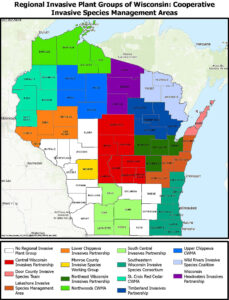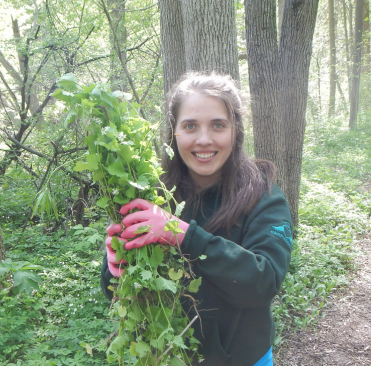By Art Kabelowsky, DNR Outreach and Communications, Fitchburg
Arthur.Kabelowsky@wisconsin.gov or 608-335-0167

Wisconsin Department of Natural Resources Forest Health team leader Becky Gray will discuss invasives during a presentation to the Southeastern Wisconsin Invasive Species Consortium, set for Wednesday, Nov. 6, at Havenwoods State Forest in Milwaukee. / Photo Credit: Art Kabelowsky, Wisconsin DNR
Forest Health team leader Becky Gray has planned an appearance at a public meeting of the Southeastern Wisconsin Invasive Species Consortium (SEWISC). She’ll give a presentation covering invasives on a statewide level.
The event will take place from 1 to 4 p.m. Wednesday, Nov. 6, at Havenwoods State Forest, 6141 N. Hopkins St., Milwaukee, WI. More information is available on the SEWISC website.
Williams to appear at WWOA event: Linda Williams will take part in a Field Day event to discuss oak and pine issues during the four-day Wisconsin Woodland Owners Association meeting, set for Sept. 26-29 in Marshfield and Stevens Point. Four tours will take place Sept. 27; the Field Day will take place Sept. 29 at Pine Bluff Tree Farm in Stevens Point.
The event is open to the public. For more information, visit the event’s website or call 715-346-4798.





 When it comes to fighting invasive plants,
When it comes to fighting invasive plants,  Southeastern Wisconsin Invasive Species Consortium is teaming up again with
Southeastern Wisconsin Invasive Species Consortium is teaming up again with